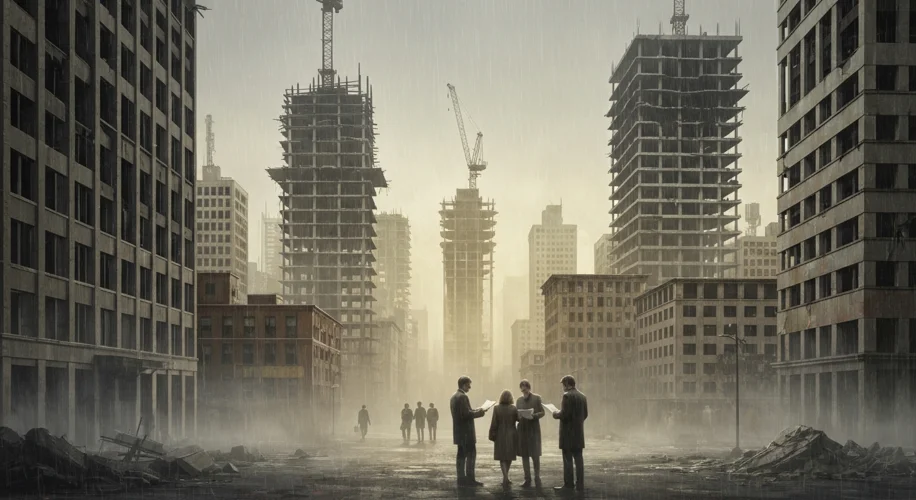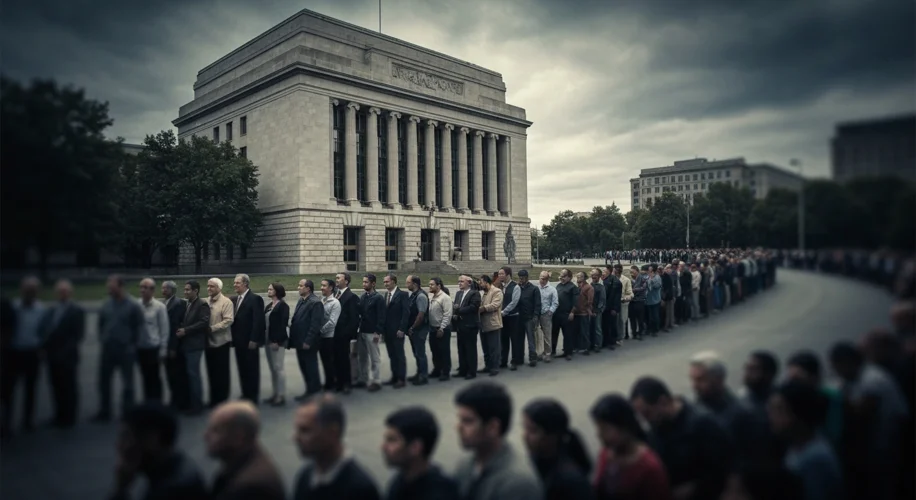Imagine a time when the American dream felt within reach for many. A time when a small down payment and a steady job could secure a home, a cornerstone of that very dream. This was the era of the Savings and Loan associations, or S&Ls, often called “thrifts.” For decades, they were the bedrock of homeownership, a safe haven for modest savings, and a reliable source of mortgages. But by the late 1980s and early 1990s, this seemingly stable institution had crumbled, leaving a gaping hole in the nation’s economy and taxpayers footing a bill that reached into the hundreds of billions.
The seeds of this crisis were sown in the fertile ground of deregulation and a changing economic landscape. For a long time, S&Ls operated under strict rules. They took in deposits, mostly from individuals, and primarily lent that money out as mortgages. Their profits were modest, but their role was vital. However, by the 1970s, inflation was soaring, and these institutions were struggling. Savers, seeking higher returns, were moving their money to money market funds, starving the S&Ls of the capital they needed.
In response, Congress passed the Depository Institutions Deregulation and Monetary Control Act of 1980, followed by the Garn-St. Germain Depository Institutions Act of 1982. The intent was noble: to make S&Ls more competitive. But the reality was far more chaotic. These acts dramatically loosened the reins, allowing S&Ls to invest in a wider range of riskier ventures, from high-stakes commercial real estate to junk bonds. Suddenly, these neighborhood banks were playing in the high-stakes casino of Wall Street.

This newfound freedom proved to be a dangerous temptation. With fewer regulations and a government-backed insurance system (the Federal Savings and Loan Insurance Corporation, or FSLIC) that effectively guaranteed depositors’ money up to a certain limit, a culture of reckless ambition took hold. Some S&L executives, driven by greed and the allure of quick profits, embarked on speculative sprees. They made risky loans with little oversight, often on properties that were overvalued or destined to fail. Fraudulent schemes flourished, with insiders siphoning off funds and creating shell companies to launder money.
One notorious example was Charles Keating and his Lincoln Savings and Loan. Keating, a wealthy businessman, poured millions into speculative real estate projects. When Lincoln inevitably collapsed, the cost to taxpayers was staggering – an estimated $3.4 billion, making it the most expensive single S&L failure. Keating’s influence extended to the highest levels of government, as five U.S. senators, dubbed the “Keating Five,” were implicated in trying to shield his failing institution from regulators.
The crisis wasn’t solely a product of greed. External economic factors played a significant role. Rising interest rates in the early 1980s devalued the long-term, fixed-rate mortgages many S&Ls held. As their assets lost value, their liabilities (deposits) became more expensive. When combined with the risky investments, the house of cards began to tumble.
By the late 1980s, the failures were escalating at an alarming rate. Regulators, initially slow to react due to the deregulation efforts and political pressure, found themselves overwhelmed. The FSLIC, once a robust insurer, was rapidly depleting its funds. The sheer scale of the problem became undeniable.

In 1989, Congress finally took decisive action, passing the Financial Institutions Reform, Recovery, and Enforcement Act (FIRREA). This monumental piece of legislation effectively dissolved the FSLIC, transferred its responsibilities to other government agencies, and created the Resolution Trust Corporation (RTC) to manage and sell off the assets of failed S&Ls. The goal was to clean up the mess and prevent future crises. The cost of this cleanup was immense, ultimately totaling an estimated $125 billion in direct government spending, with broader economic impacts pushing the total much higher.
The consequences of the S&L crisis were far-reaching. For ordinary Americans, it meant the loss of jobs, the erosion of trust in financial institutions, and the burden of paying for the bailout through taxes. For the economy, it led to a contraction in credit, a slowdown in commercial real estate development, and a general sense of uncertainty.

The S&L crisis serves as a stark reminder of the delicate balance between economic freedom and regulatory oversight. It demonstrated how the pursuit of unchecked ambition, coupled with lax supervision, can lead to widespread economic devastation. The lessons learned from this period continue to inform financial regulation and the ongoing debate about the role of government in safeguarding the economy, ensuring that the echoes of the 1980s and 90s serve as a cautionary tale for generations to come.

